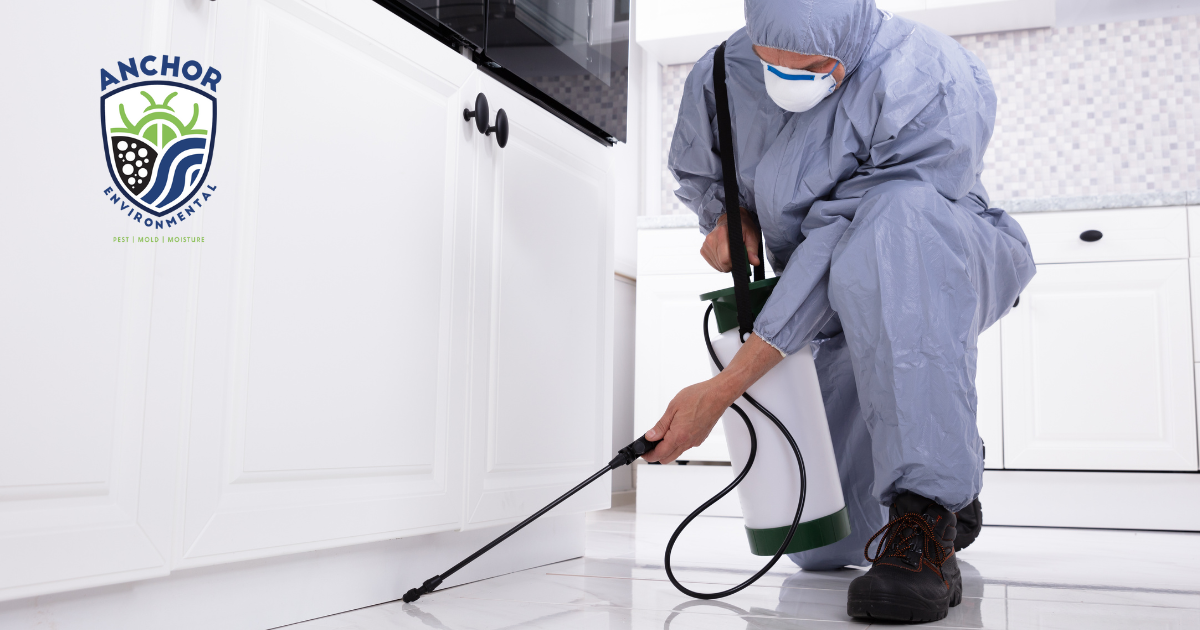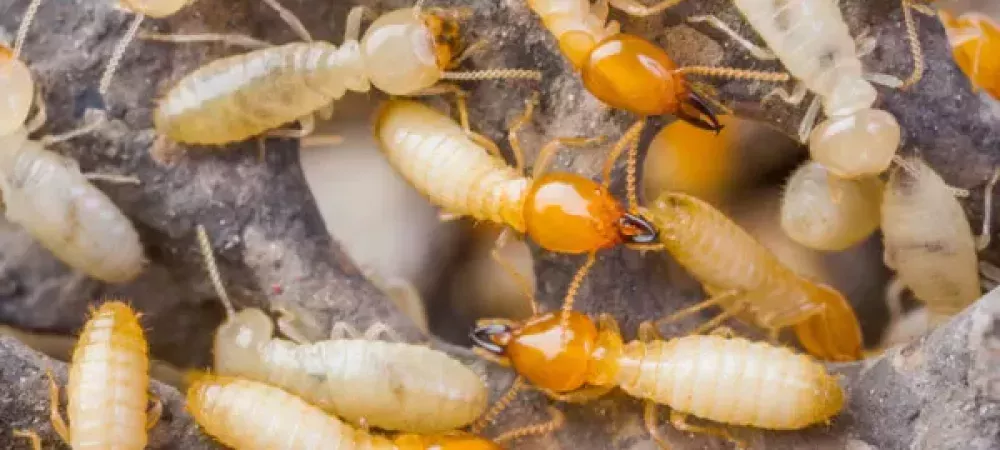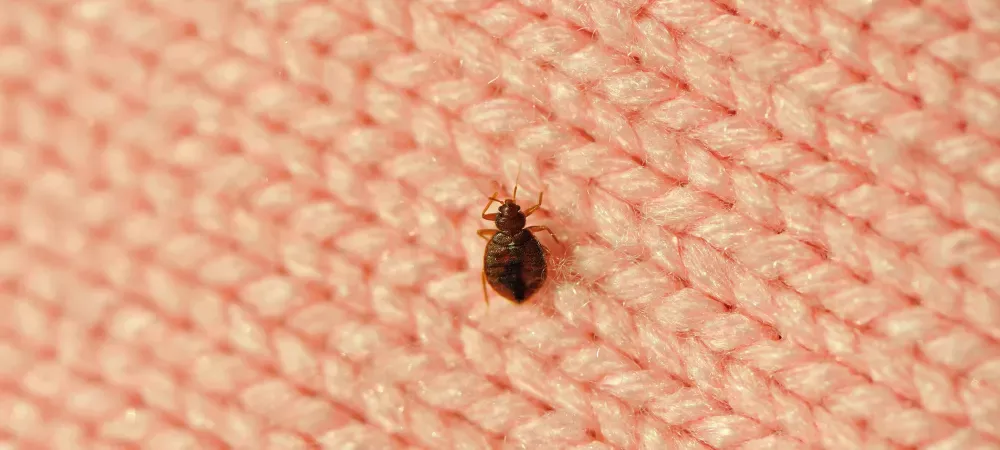Winter Guests Uninvited: Charleston’s Guide to Keeping Pests at Bay with Anchor Environmental
Common Winter Bugs & Pests in Charleston, SC
As the palmetto trees stand still against the brisk Charleston winds, residents of this historic city are finding more than just the charm of cobblestone streets and the warm flavors of Lowcountry cuisine to keep their hearts content during winter.
With the cool season in full swing, it’s not just the locals seeking refuge from the chill. Unseen to the naked eye, a bustling activity is taking place as winter bugs and pests seek the warmth of our homes.
Whether it’s the quiet corners of an attic in a Charleston single house or the unseen nooks of a grand Antebellum mansion, understanding these unwanted guests is the first step to keeping them at bay.
Navigating Charleston’s Wintertime Pests: A Homeowner’s Guide
The winter season in Charleston, SC, isn’t just about the quiet beauty of frost-kissed mornings or the historic city streets adorned with festive lights. It also marks the time when the local wildlife, particularly pests, begin seeking the warmth and shelter of our homes. This silent migration can turn your cozy retreat into a haven for critters if left unchecked.
With pests in Charleston, SC, becoming a more pressing concern as temperatures drop, the knowledge of what to expect and how to combat these intruders becomes invaluable. And as any savvy Charlestonian knows, pest control isn’t just a service—it’s a winter necessity that stands between the tranquility of your home and the chaos of unwelcome guests.
Anchor Environmental stands at the ready, bringing expertise and local know-how to ensure that your abode remains the sanctuary it’s meant to be, even when nature has other plans.
Understanding Winter Pests in Charleston, SC
The quaint charm of Charleston is unmatched, but the onset of winter can bring unwelcome pests into our peaceful abodes.
Let’s explore the common critters that you might find scurrying around your home as the temperature drops and how Anchor Environmental’s expert pest control services can offer you peace of mind.
- Rodents and Their Behavior
- Overwintering Insects
- Cockroaches and Their Habits
- Outdoor Pests Seeking Shelter.
Rodents and Their Behavior
In the quiet of winter, rodents become the uninvited guests of Charleston’s historic homes, drawn to the promise of warmth and sustenance.
These clever creatures are not only survivors but also agile invaders, capable of squeezing through gaps as small as a quarter inch to infiltrate your space. But it’s not just their size that’s concerning. Rodents have a penchant for gnawing, which can lead to significant damage to wires and potentially cause fire hazards.
Their nesting habits can compromise the insulation and structure of your home by turning your sanctuary into a nest. Understanding their behavior is the first step in fortification, so seal off their entry points, keep your home clutter-free, and ensure all food is stored in rodent-proof containers to discourage their advance.
Overwintering Insects
Overwintering insects are nature’s little stowaways, seeking shelter in the nooks and crannies of our homes to escape the cold. Stink bugs, ladybugs, and boxelder bugs might be less noticeable than rodents, but they are just as determined to survive the winter.
These insects are not only a nuisance but can also be a precursor to larger infestations. They often enter homes in the fall, hiding away until the warmth of your heating system encourages them to emerge. Preventing their intrusion is key.
Regularly inspect and repair any cracks in your home’s exterior, ensure windows and doors have tight-fitting screens, and consider professional pest control to manage any that have already found their way inside.
Cockroaches and Their Habits
Cockroaches, particularly the German cockroach, are notorious for their resilience and the speed at which they can take over a space. In Charleston, where the winters are mild, but the homes are cozy, these pests find the perfect breeding ground.
They’re not just seeking refuge—they’re looking for a place to thrive. Their love for humidity and warmth means that common household environments can become their playground.
Keep them out by maintaining a dry and cool atmosphere where possible, fixing leaks promptly, and ensuring crumbs and food remnants are cleaned up immediately. Remember, cockroaches are not just a seasonal problem. They require year-round vigilance.
Outdoor Pests Seeking Shelter
An army of pests is surrounding your home, even when the cold temperatures arrive. Outdoor pests, such as ants and spiders, may seek the warmth of your home and batten down the hatches inside until spring.
Deterring these pests is possible with the right approach. Look for outdoor attractants, like debris near the house, and remove them. Inspect all entry points that are weak spots for invasion.
Windows, doors, the basement, and plumbing and electrical hookups are all possible entry points. Seal these carefully to protect your home from pests during the winter.
The Advantages of Proactive Winter Pest Control in Charleston, SC
As the temperatures start to drop, Charleston’s unwelcome critters start eyeing our warm abodes.
Here are some of the benefits of winter pest control:
- Peace of Mind Understanding and addressing the behaviors of winter pests in Charleston, SC, gives homeowners peace of mind. With the right knowledge and actions, you can enjoy the winter months in comfort without uninvited guests.
- Protect Your Home’s Integrity Pests can cause damage to your home’s structure and wiring. Taking steps to prevent their entry helps protect your home’s integrity and value.
- Health and Hygiene Pests can carry diseases and trigger allergies. Keeping them out of your home ensures a healthier environment for you and your family.
- Save on Costs By preventing pest infestations, you can save money on potentially costly repairs and pest control services down the line.
- Preserve Your Home’s Comfort Your home is your sanctuary. Maintaining a pest-free home preserves the comfort and serenity of your living space.
Secure Your Sanctuary This Winter
Winter in Charleston is a time for warm gatherings and creating memories in the comfort of our homes, a time which should remain undisturbed by the distress of pest invasions.
Understanding the habits of these winter pests and taking preemptive steps can ensure your home stays a place of peace and comfort. By partnering with Anchor Environmental, you gain more than just a pest-free home—you gain the assurance that your sanctuary is protected by experts who care deeply about your peace of mind and the integrity of your cherished space.
Don’t let pests be an unwarranted shadow over your winter festivities. Take action today, reach out to Anchor Environmental, and let’s ensure your Charleston home remains the warm, inviting haven it’s meant to be all season long.





